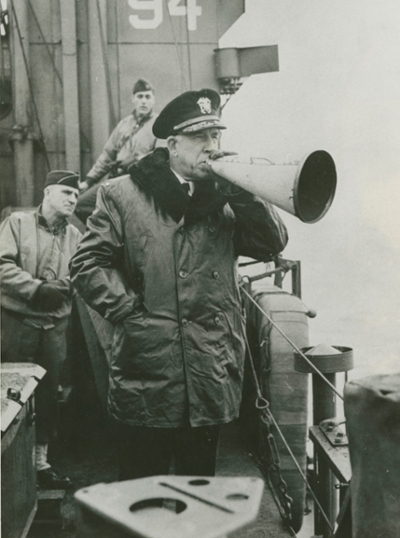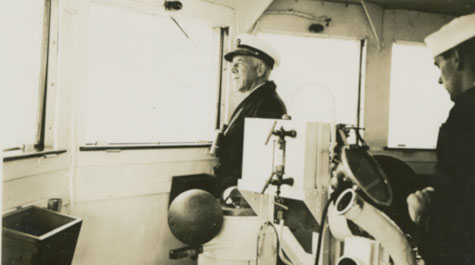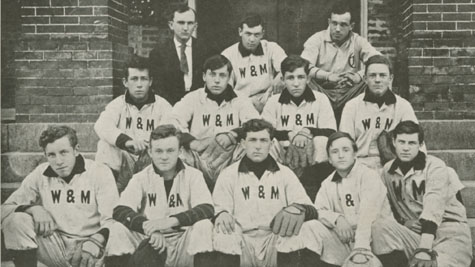William & Mary's D-Day connection
Seventy years ago today, Allied forces in World War II stormed the beaches of Normandy in an effort to begin the liberation of France and end the war as part of an operation that would become known as D-Day. The images of infantry charging out of the water have been immortalized through photographs and film, but the naval operations required to transport troops to land may have been equally important. a “never surpassed masterpiece of planning” according to historian Correlli Barnett.
It is in this naval effort that William & Mary finds one of its own, alumnus John Lesslie Hall, Jr., rear admiral in command of the 11th Amphibious Force, which supported the invasion of heavily-defended Omaha Beach. His papers are now contained in the Special Collections Research Center in William & Mary's Swem Library, including correspondence throughout World War II.
Hall attended the College for three years before transferring to the Naval Academy in 1909. His connection with William & Mary goes back further than that, however, because his father, John Lesslie Hall, Sr., was a professor of English history and literature from 1888 to 1928 and one of the “Seven Wise Men,” seven professors that taught at W&M when it reopened following the Civil War.
Speaking of his earliest memories of the College, Hall told Columbia University’s Oral History Research Office that he remembered being on campus even as a child.
“I went to exercises at William & Mary, at the Assembly Hall which was the college chapel,” he said.
Tutored by his older brother, also a W&M student, Hall enrolled a year earlier than the age requirement. A star athlete, he competed in basketball, baseball, and his favored football, which he would continue to play at the Naval Academy. Hall spoke fondly of his athletic experiences, saying that “maybe that had something to do with wanting to keep up my college career.”
Following his transfer from William & Mary and graduation from the Naval Academy, Hall went on to a long and decorated career in the U.S. Navy. As a junior officer he served in World War I and ascended to the rank of rear admiral for the invasion of Morocco in World War II. Hall’s accomplishments in Africa earned him two awards of the Legion of Merit and the Distinguished Service Medal, as well as the command of the 11th Amphibious Force.
When the time came for the invasion of Normandy, Hall was called upon to support the 29th and 1st Infantry Divisions in their assault on Omaha Beach. Despite meticulous planning around tides and phases of the moon, strong currents and bad weather made reaching the shore extremely difficult. Hall was lauded for his work following the invasion by Maj. Gen. Charles H. Gerhardt, commander of the 29th Infantry Division, who thanked him for “the grand way you put us ashore on the Omaha Beach.”
After World War II, Hall became Commandant of the 14th Naval District and commander of the Armed Forces Staff College in Norfolk. He retired in 1953 as commander of the Western Sea Frontier, with additional duty as commander of the Pacific Reserve Fleet. Upon leaving active duty, Hall was advanced to the rank of admiral on the basis of his combat awards.
Hall would return to William & Mary to earn his diploma in the late 1920s at the behest of his father. He also gave the 1949 Commencement address, at which time he received an honorary degree.
















